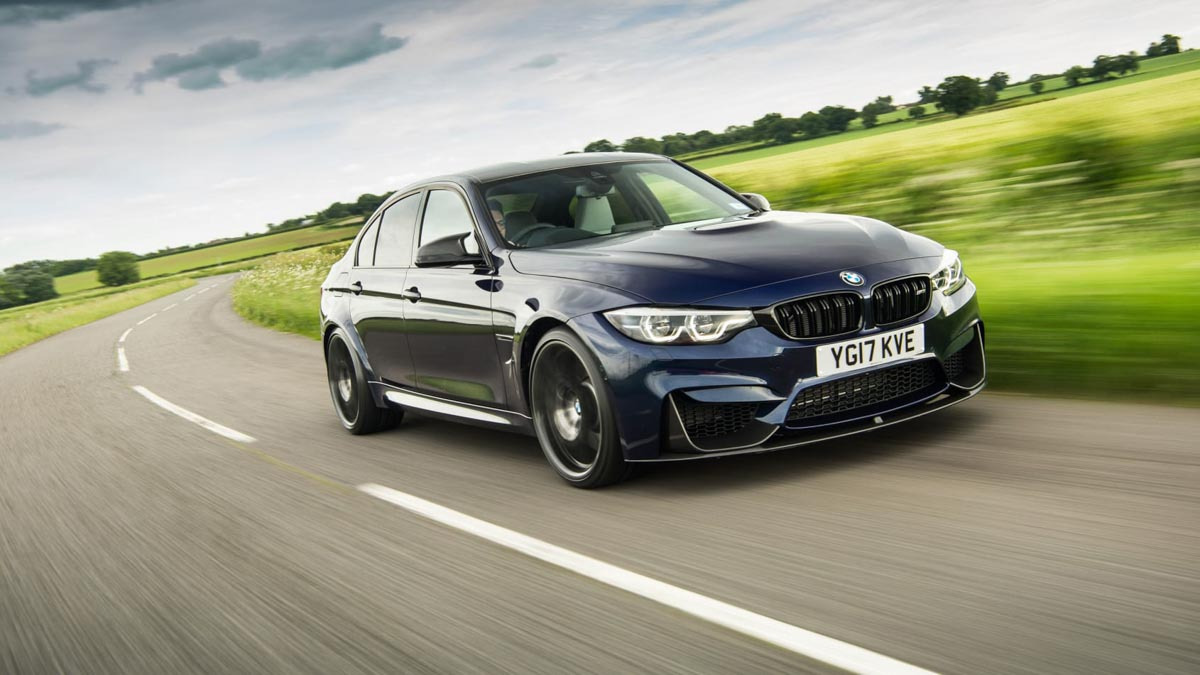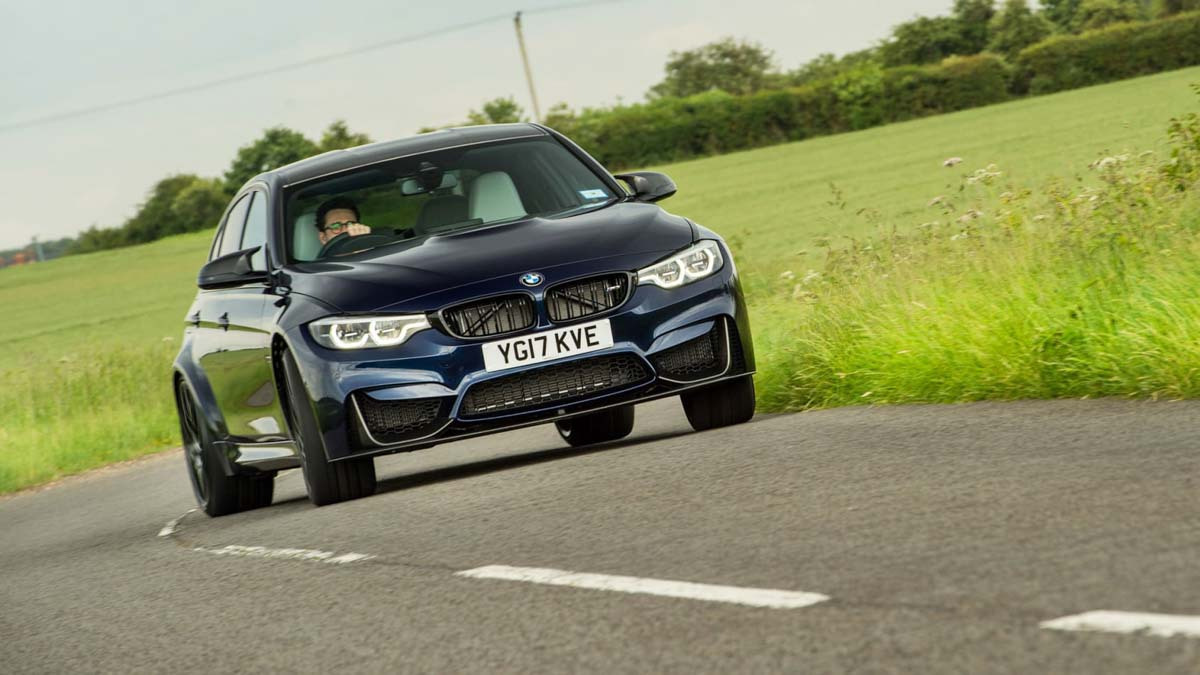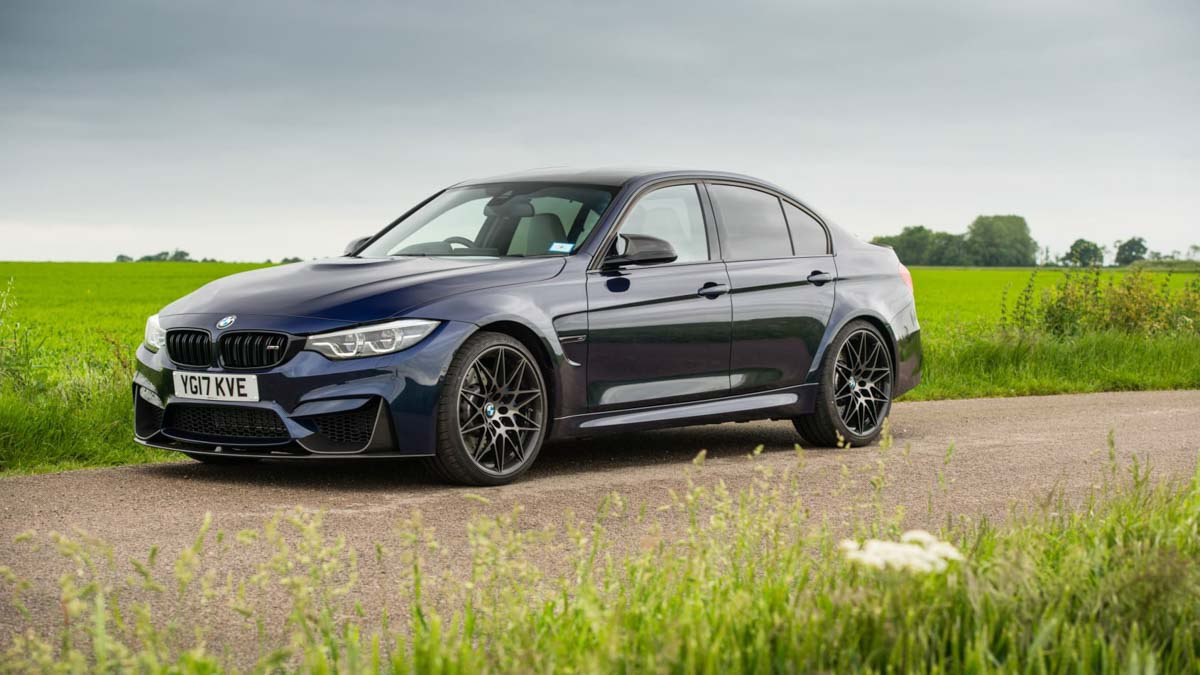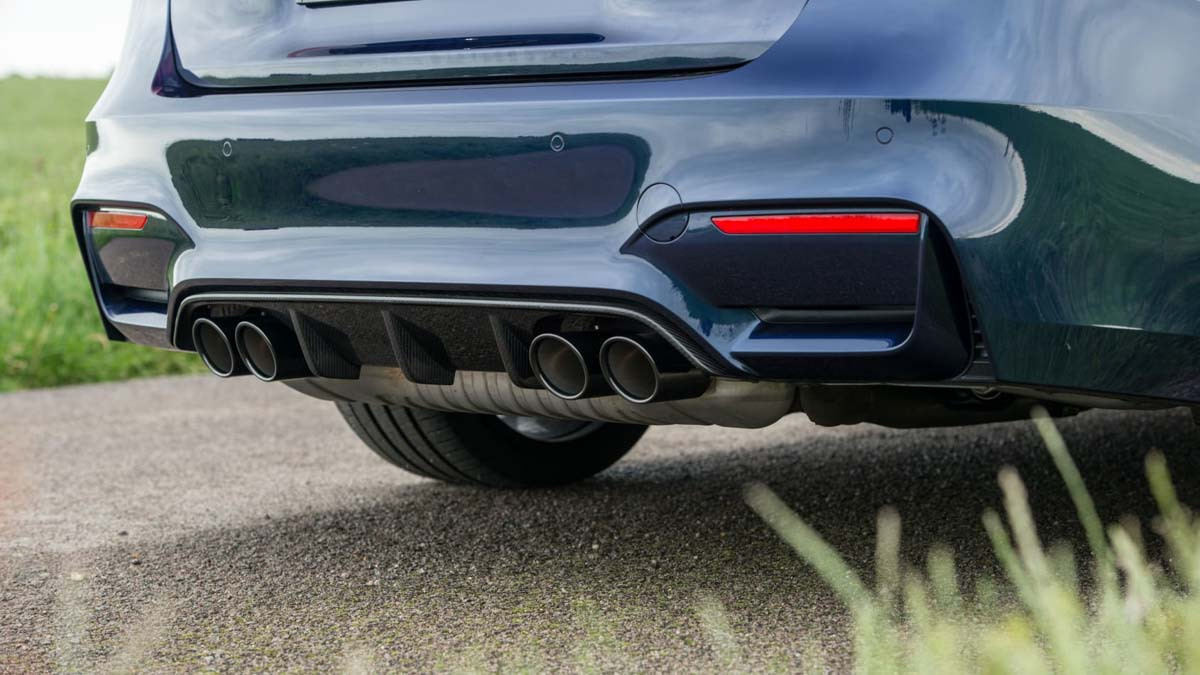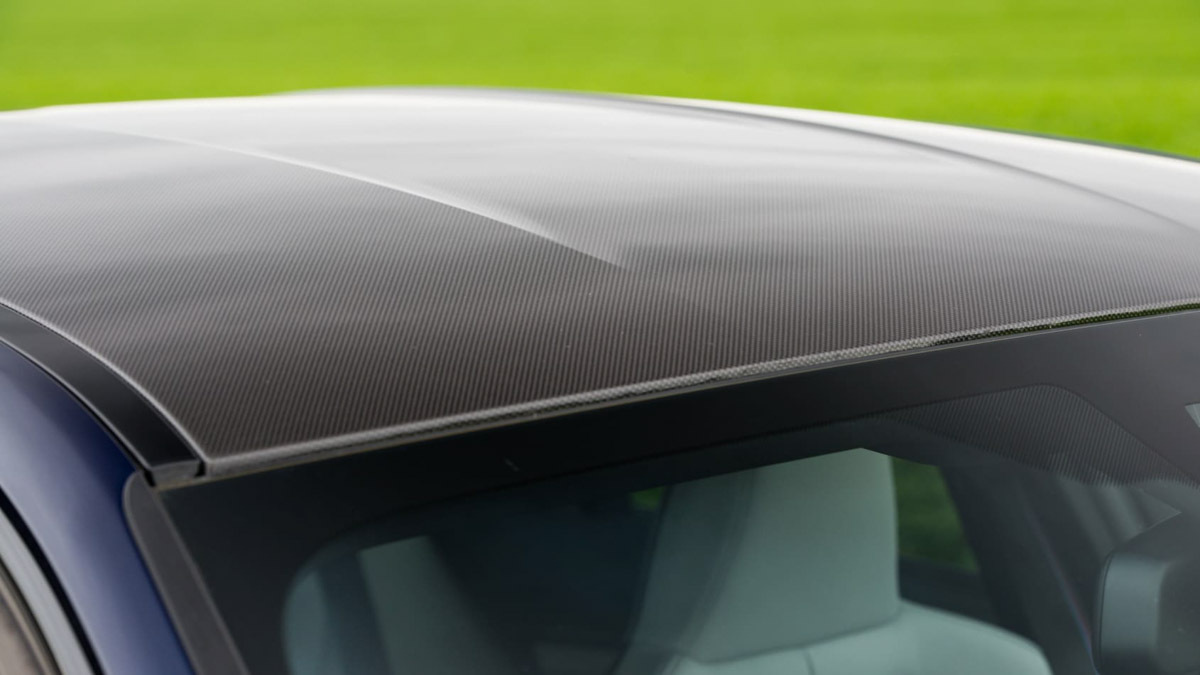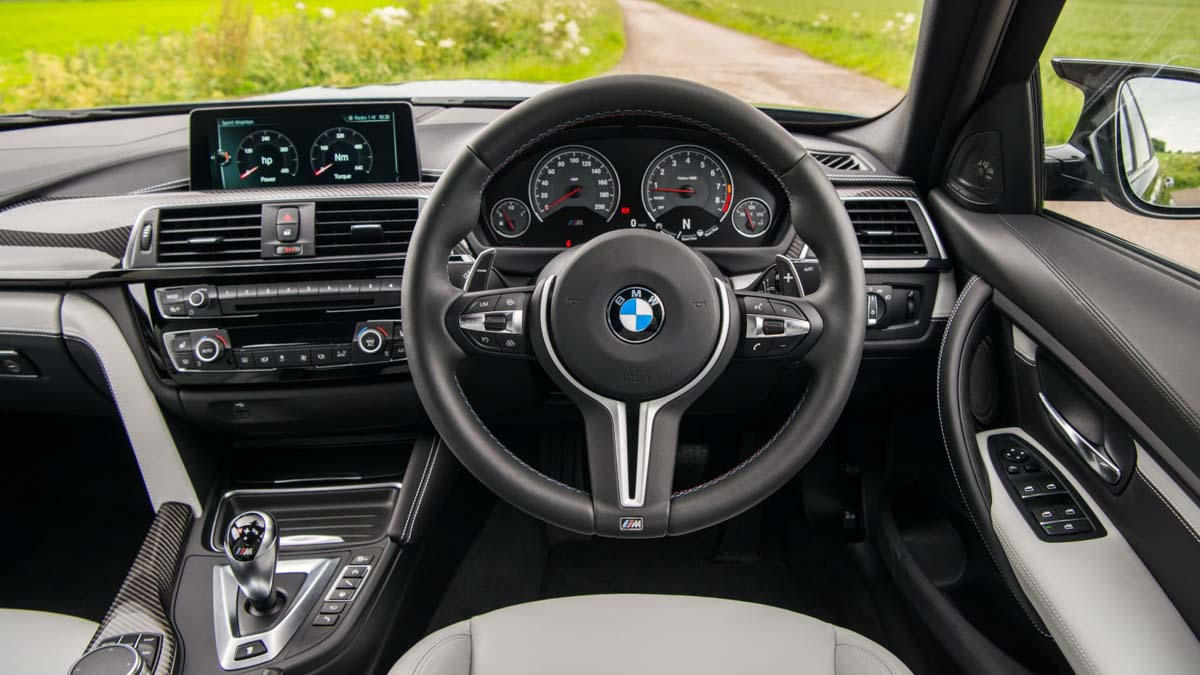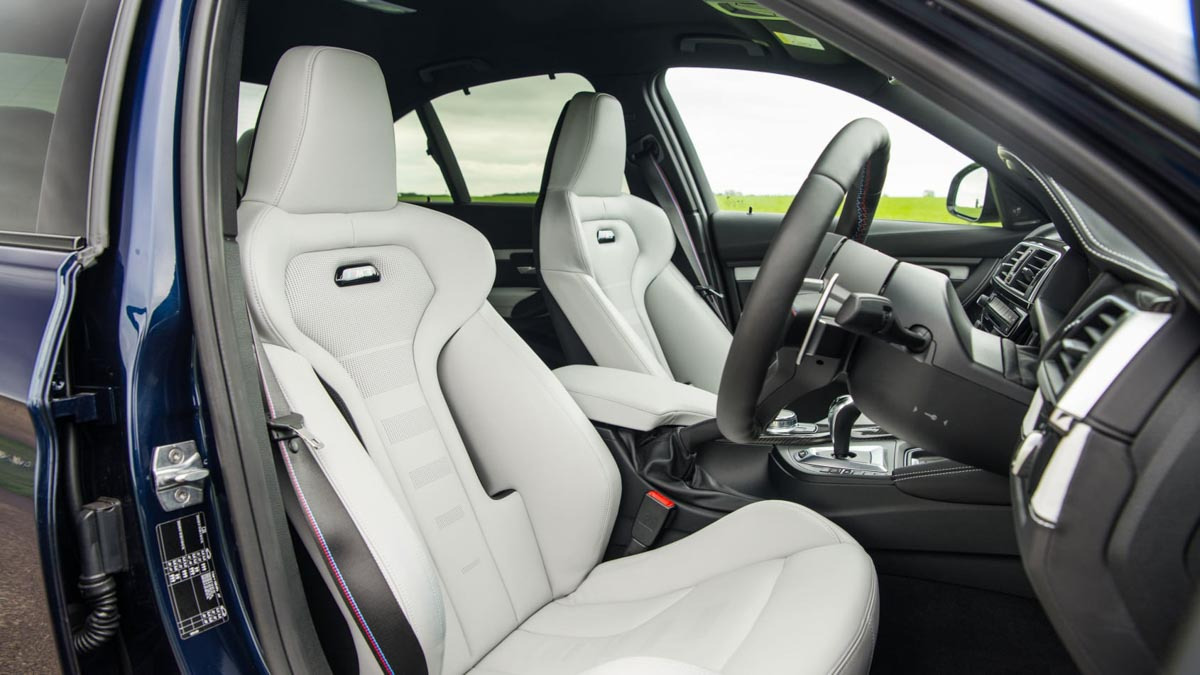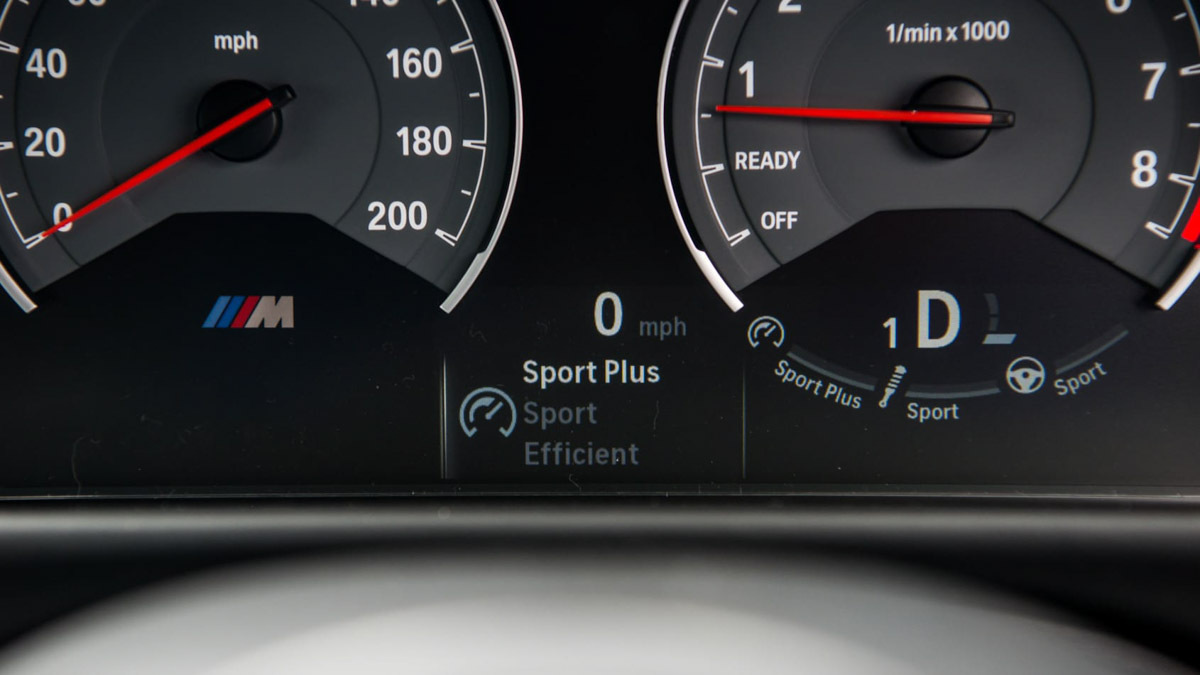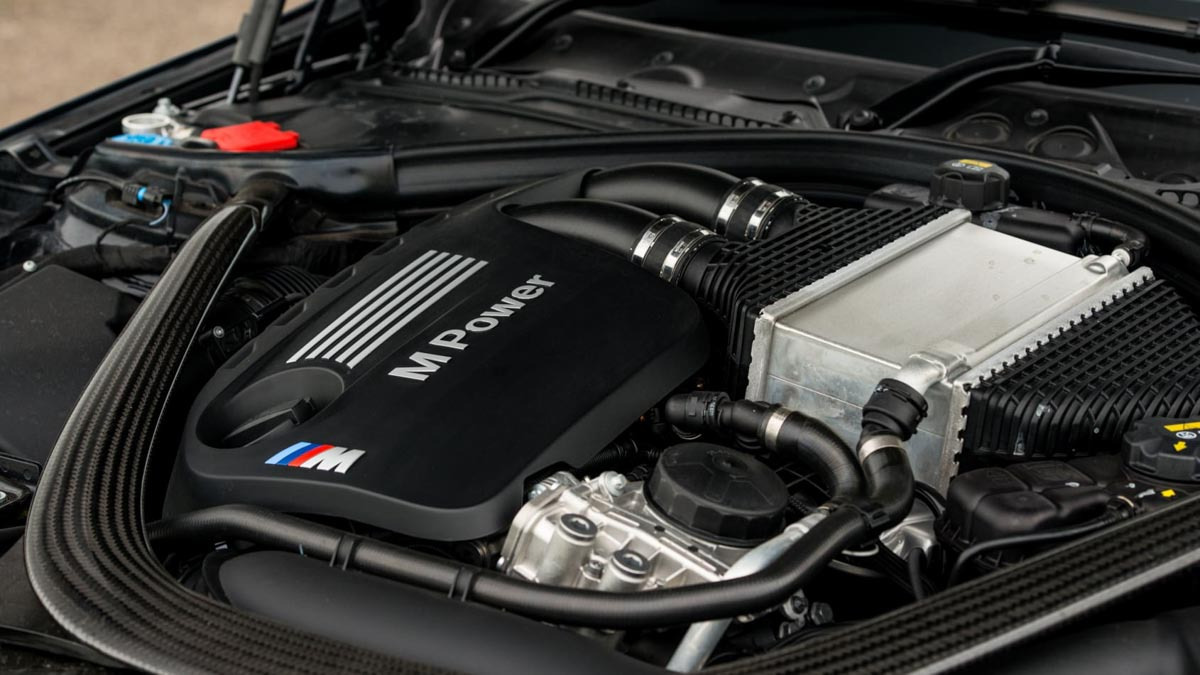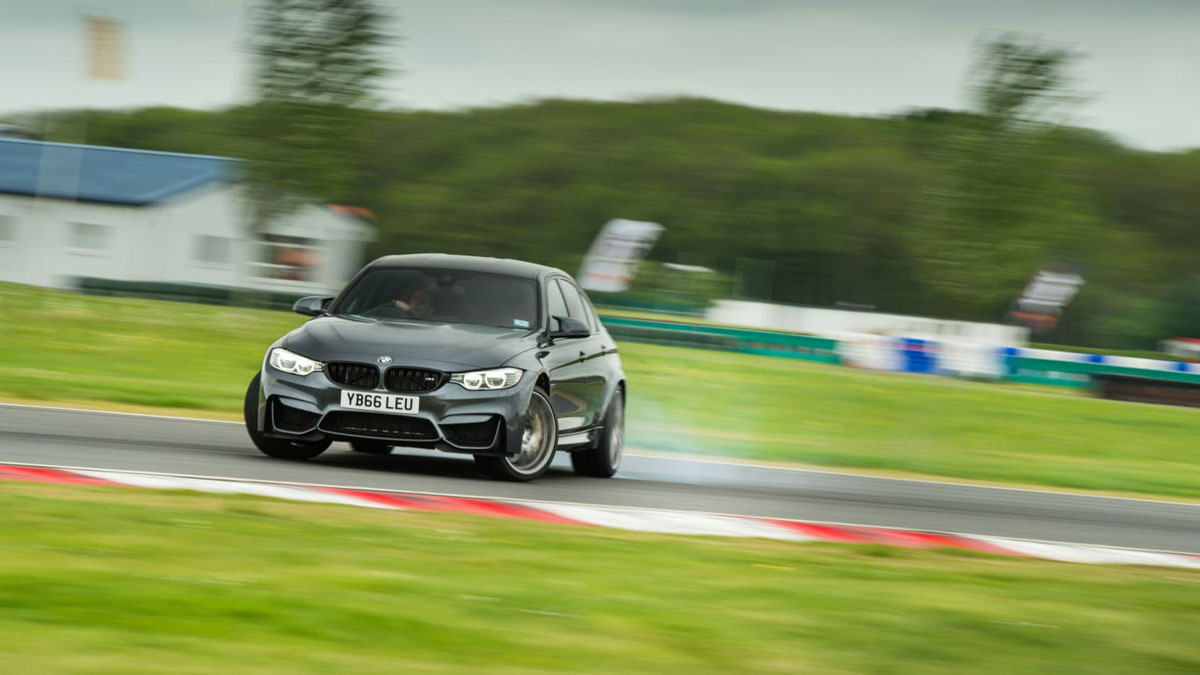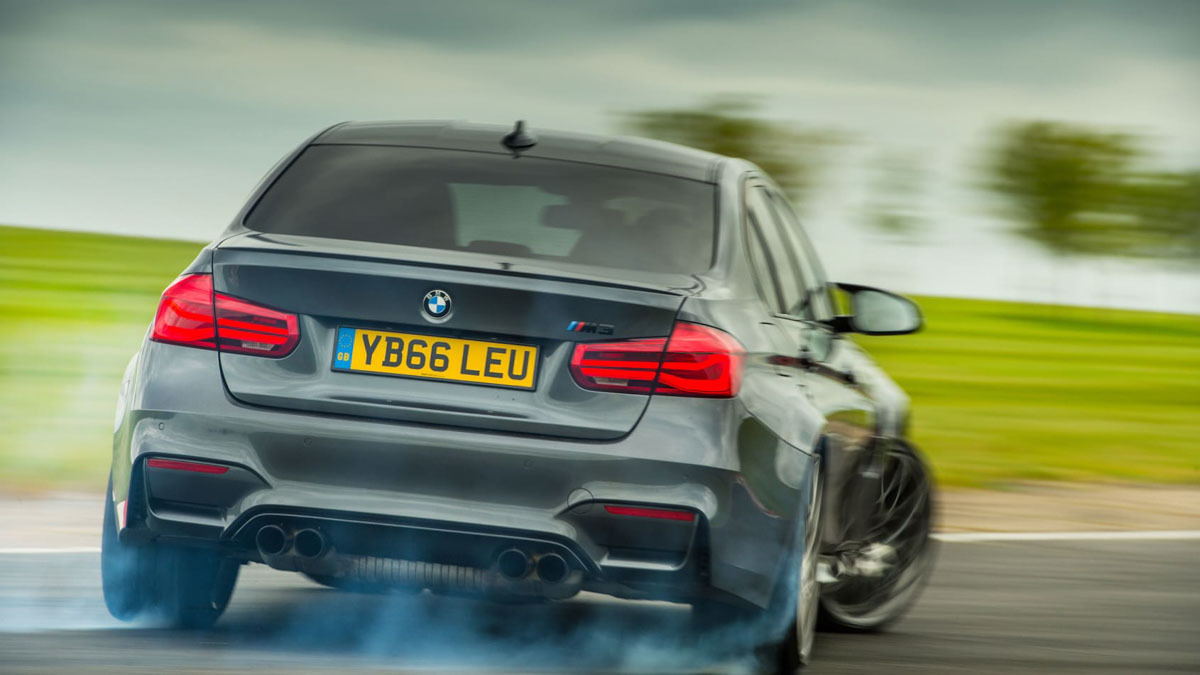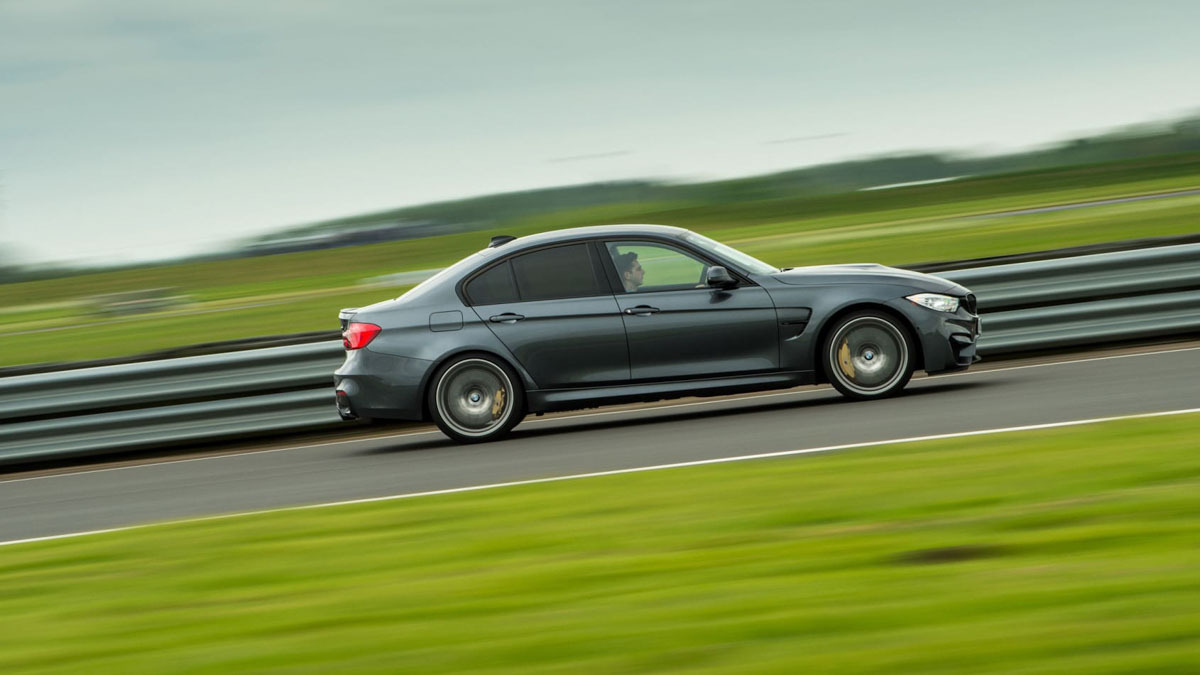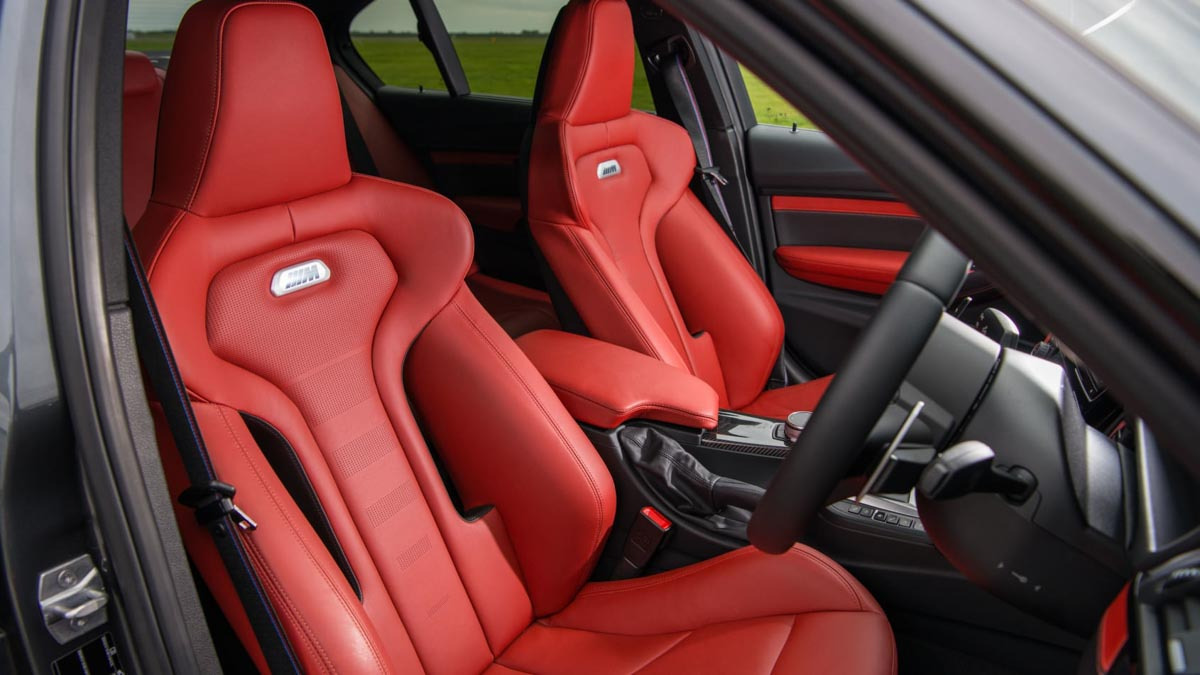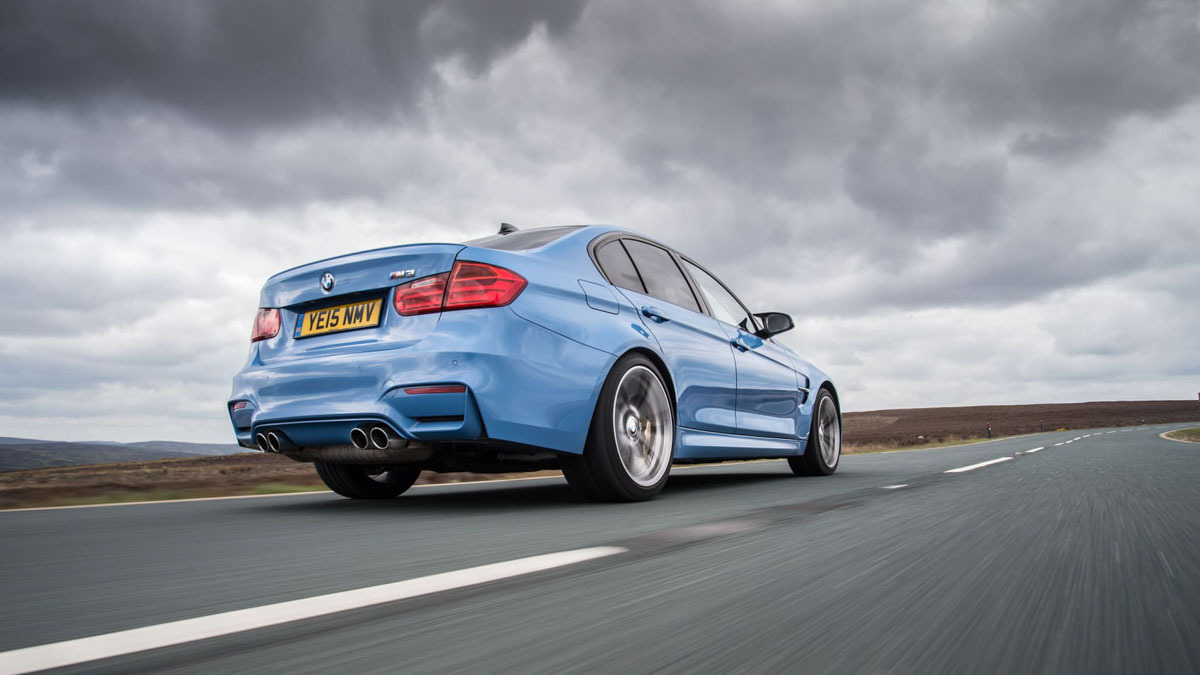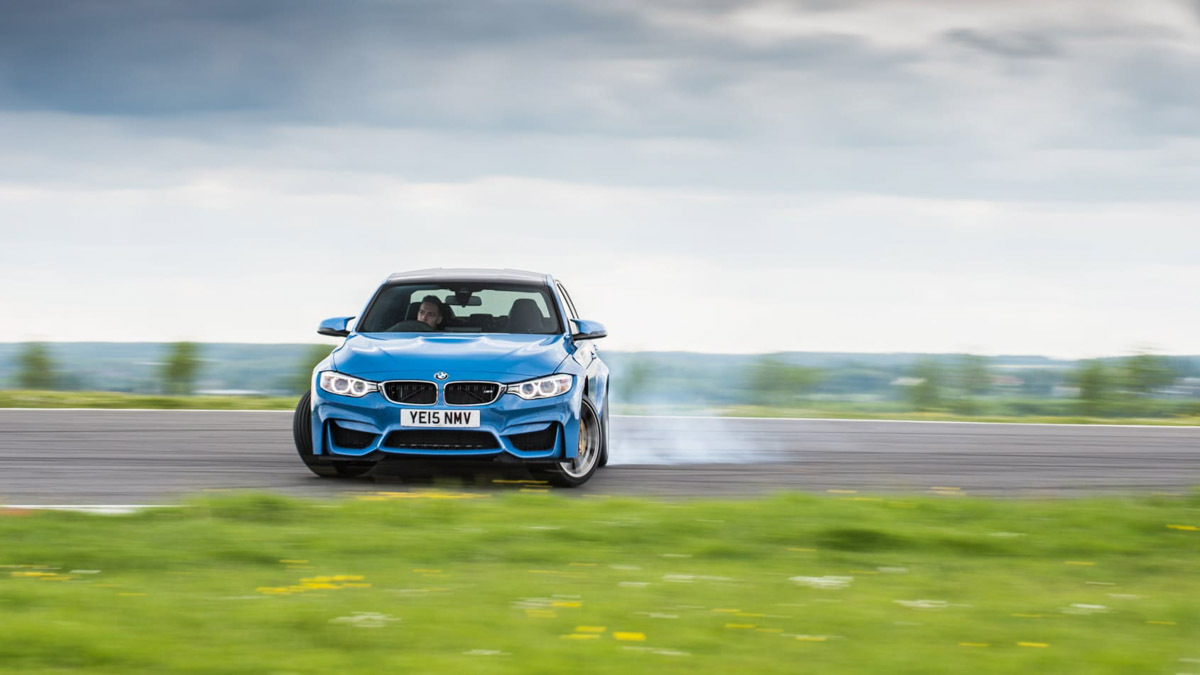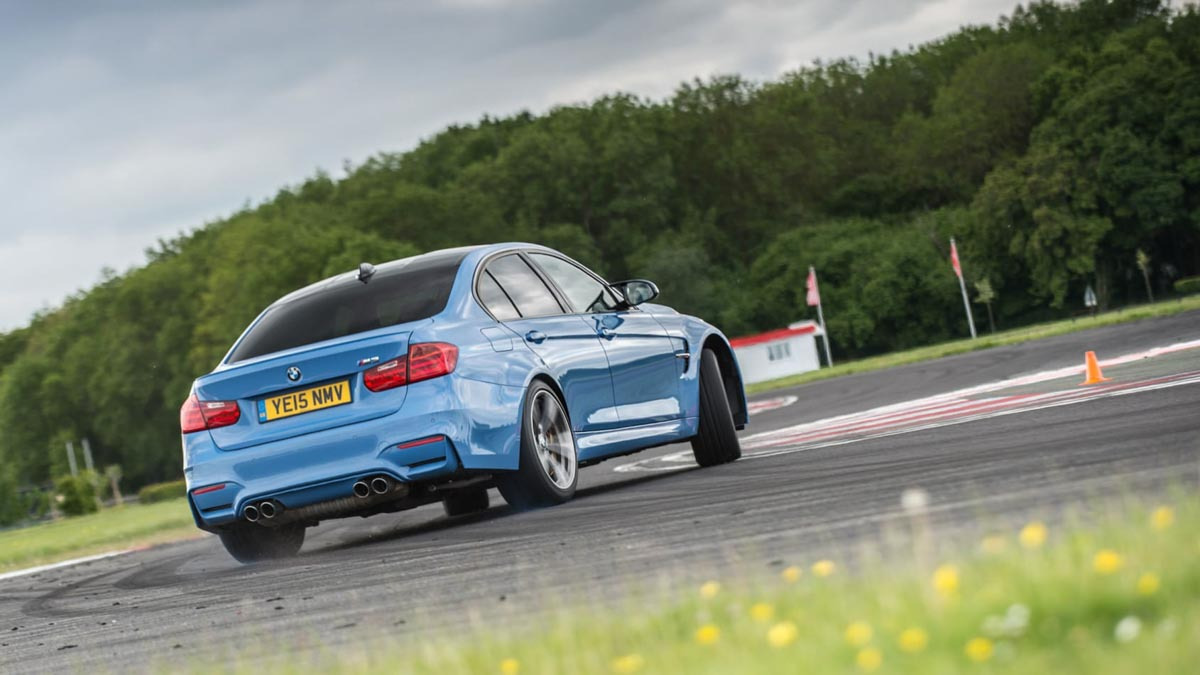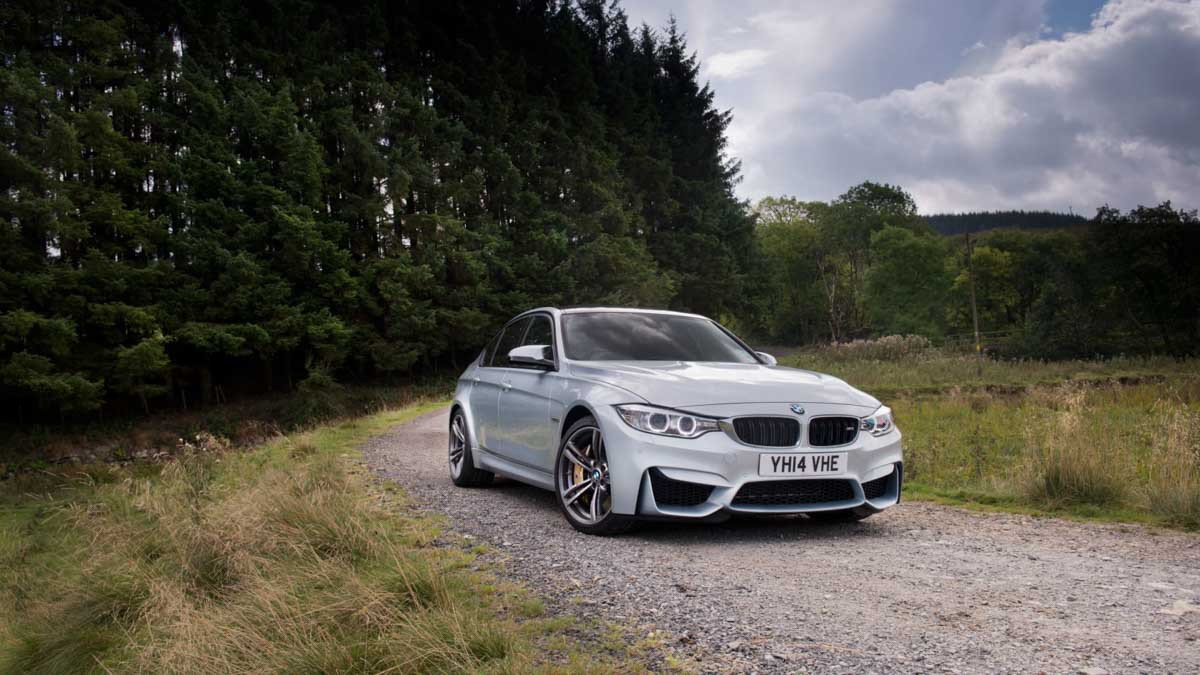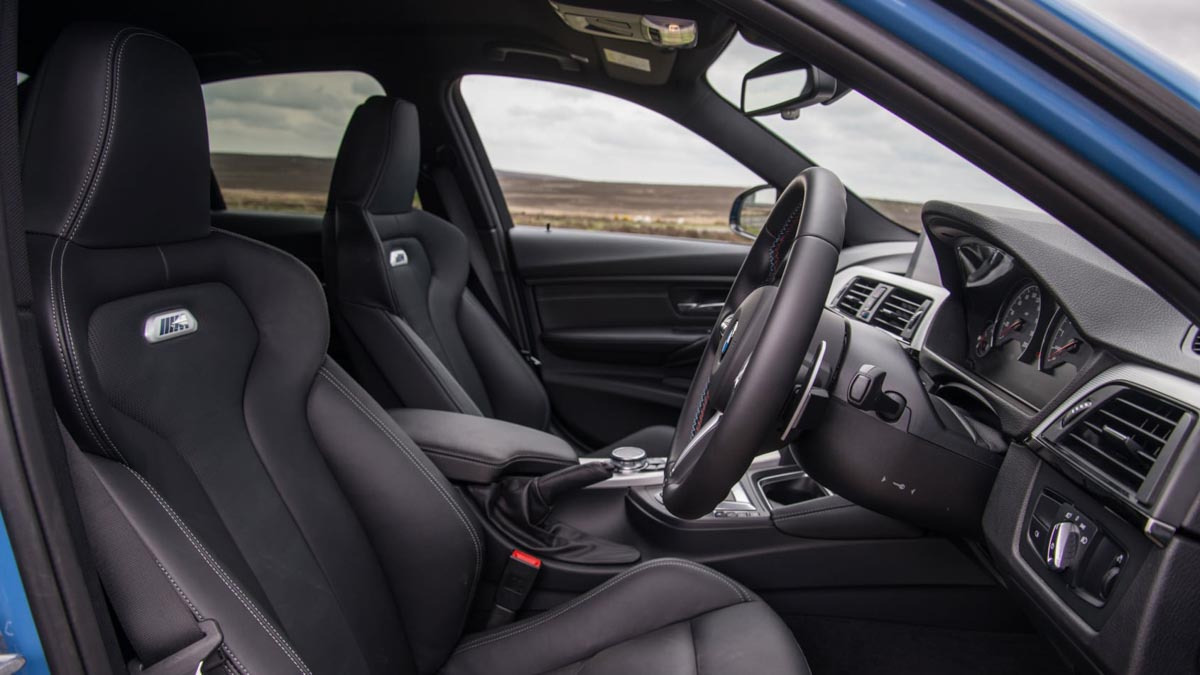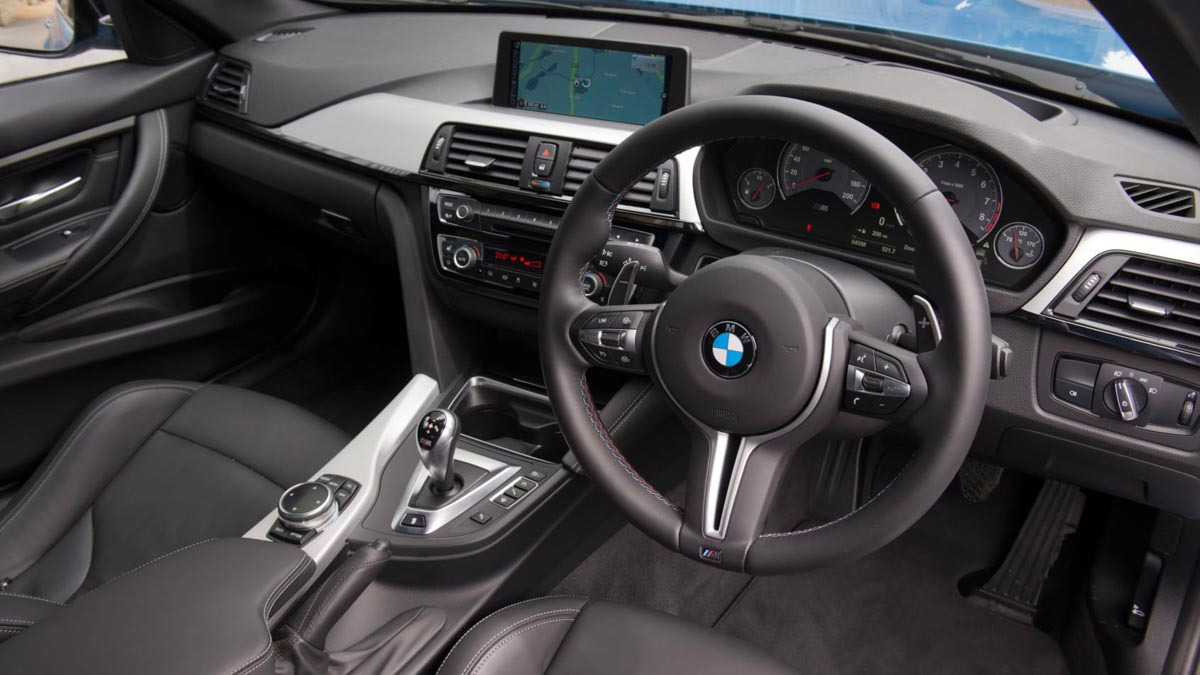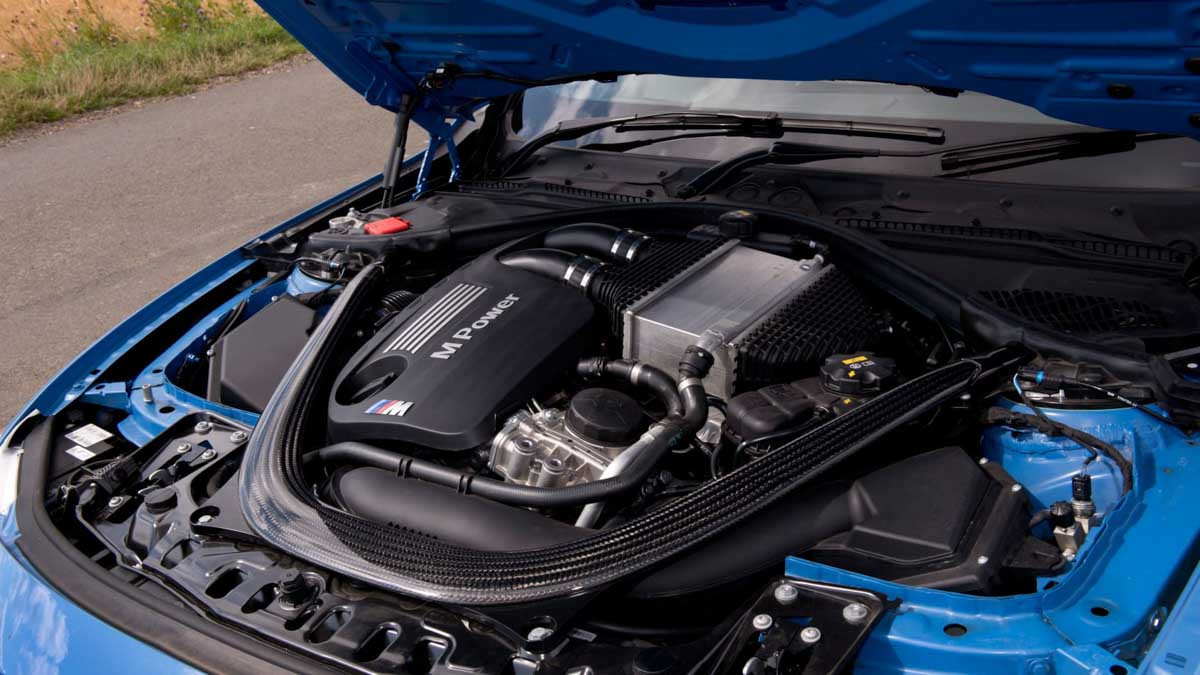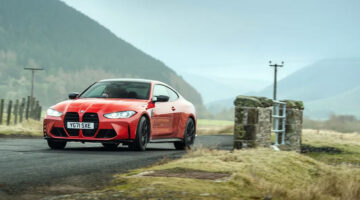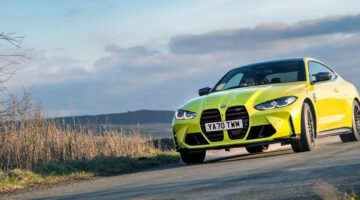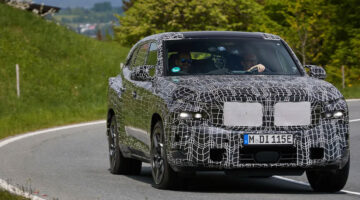The latest updates to this performance car icon have improved it greatly, it now has the composure to match its mighty performance
The BMW M3 has become a fundamental part of the performance car world since its introduction in 1988. Track days or a Nürburgring tourist lap wouldn’t be complete without at least one M3 of some generation slithering its way round the circuit. In the 32 years since the M3 lineage was founded, the car’s influence hasn’t waned much either. BMW’s creation remains a benchmark sports coupe, and saloon, that trades little of the base 3-series’ comfort and usability in delivering its exceptional driving dynamics.
When the current F80 model was released in 2014, it brought with it a larger saloon-only bodystyle (the coupe and cabriolet now moved to the less evocative M4 moniker), a turbocharged six-cylinder engine and more comfort and convenience features than ever before.
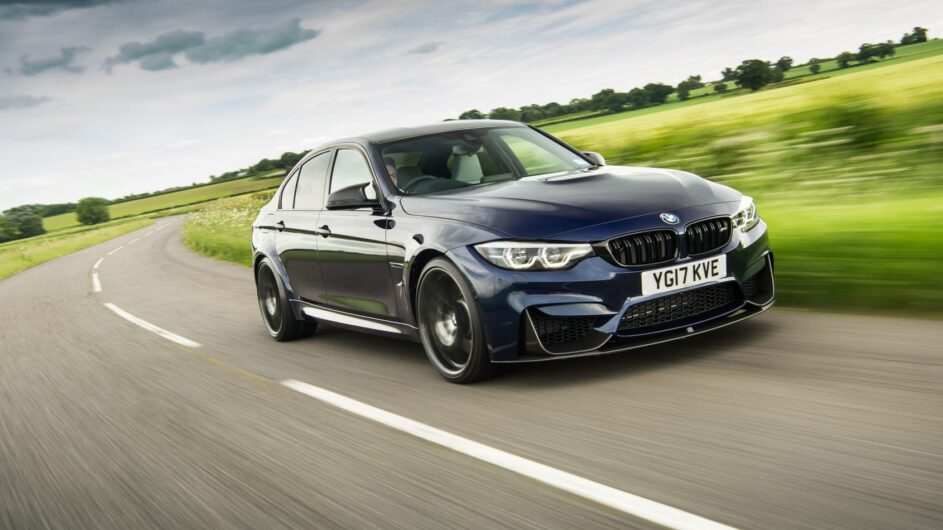
The performance and pace of the early versions of the F80 was never in doubt, but they weren’t particularly suited to the bumpy and undulating roads. Poor body control, particularly at the rear, made the car feel difficult to predict and trust, especially when the weather was anything other than bone dry.
Over the years, tweaks to the BMW’s chassis and drivetrain calibration helped, but it wasn’t until the M3 Competition version arrived that the F80 M3’s potential was finally realised. Despite the 19bhp power bump, the Competition’s tweaks were so successful that BMW eventually dropped the standard version, leaving just the Competition and the rare, expensive CS available when production came to an end in 2018.
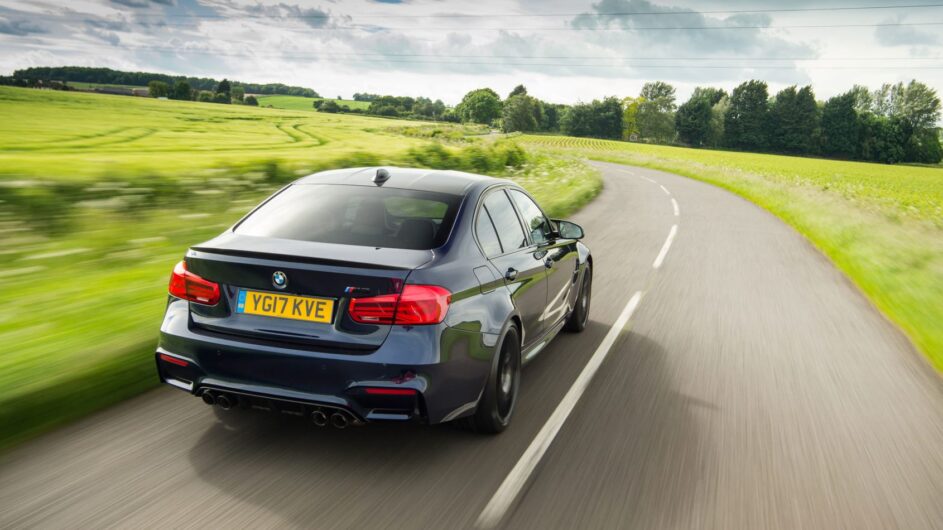
Prices, specs and rivals
In 2018, $70,000 was the entry price for the base car in standard trim equipped with a six-speed manual gearbox; specify the optional dual clutch transmission and BMW asked another $3,000 of you.
Competition Package trim cost a further $3,500, but its gentle power bump, bigger wheels, revised chassis and recalibrated LSD softened the sharp edges of the standard M3, improving the overall package beyond the very reasonable price hike. Many, if not all of the late-build M3s are Competition-spec though, and very few were ordered with the manual transmission. If you plan on taking your M3 on track, it’s worth finding an example with carbon ceramic brakes, although they’re also rare due to their $7300 premium.
The wait for the next-gen M3 won’t be too long though, with an all-new generation based on the current G20 3-series is expected later in 2020. We already know it’ll keep hold of a turbocharged in-line-six petrol engine, although it’ll be the new S58 unit found in the X3 M. M3s fitted with a manual transmission and rear-wheel drive are expected to be available, but most will combine an eight-speed ZF automatic gearbox and selectable all-wheel drive for the first time. It will finally match the Mercedes-AMG C63 and Alfa Romeo Giulia Quadrifoglio for power with 503bhp though.
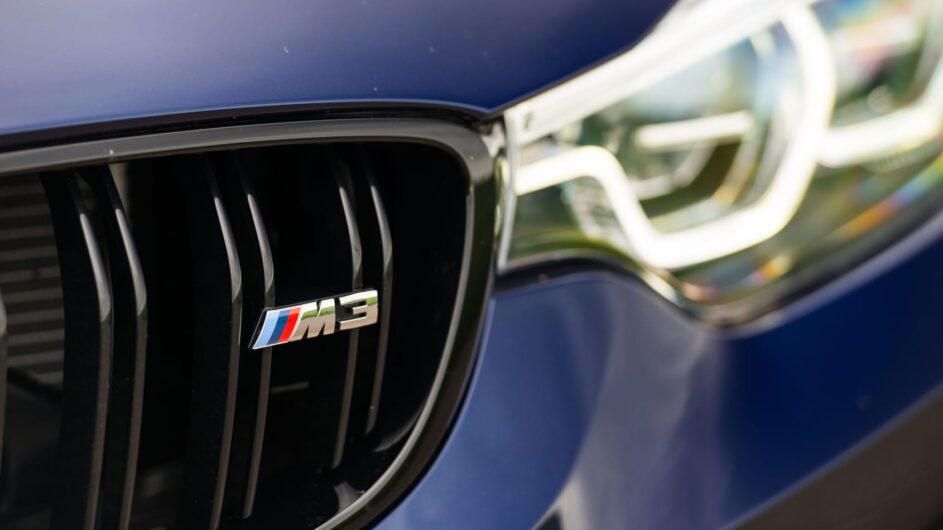
Rivalling this next-gen M3 is Audi’s RS4 Avant, which does a great job of putting power to the tarmac, although its sterile, somewhat cold demeanor makes it more of a fast road car than a track hack. The RS5 Sportback is (meant to be) the RS4’s more stylish five-door hatchback variant, but its driving experience is not any sharper in reality, while the sloping roofline and hatchback body is less practical. The pair were also revised for 2020, and cost from around $75,000 and $80,000 for the RS4 and RS5 respectively.
Mercedes-AMG’s C63 S is a more powerful proposition, and like the Audi it lacks the final well-honed edge in terms of driver involvement. Its V8 is a whole lot more powerful with 503bhp though it’s a somewhat pricier $86,000. There’s also an optional estate bodystyle.
It’s the Italian in this equation that’s impossible to overlook though; Alfa Romeo’s Giulia Quadrifoglio is, quite literally, the BMW M3’s worst nightmare. Its more powerful, charismatic and effective twin-turbo 2.9-litre V6 engine matches the AMG with 503bhp, but is situated in a lighter and more focussed chassis. It’s agile yet confidence inspiring, playful yet composed, the Giulia Quadrifoglio was a shock to the system when it arrived in 2017, and one that really showed up the BMW M3’s 32-year domination of the sports saloon class.
Performance and 0-60 time
The M3’s twin-turbocharged engine may not have the tantalising induction howl and high rev limit that previous M3 engines were famous for, but it what it lacks in sonorous delights it makes up for in bragging rights.
With 425bhp available from 5500 to 7300rpm and 406lb ft of torque from 1850 to 5500rpm, the M3 offers plenty of grunt. When we tested it we found the Bavarian saloon could accelerate from 0-96kph in 4.1sec (0.2sec faster than the claimed 0-100kph time of 4.3sec) and from 0-160kph in a frankly astonishing 8.6sec. Typically for a car of this type, the M3’s top speed is limited to 250kph.
An M3 with the Competition Package raises this to 444bhp, 19bhp more than the standard car while torque remains the same. The extra power helps the more focused M3 reach 0-100kph just 0.1sec quicker than the claimed time of the basic version, at 4.2sec.
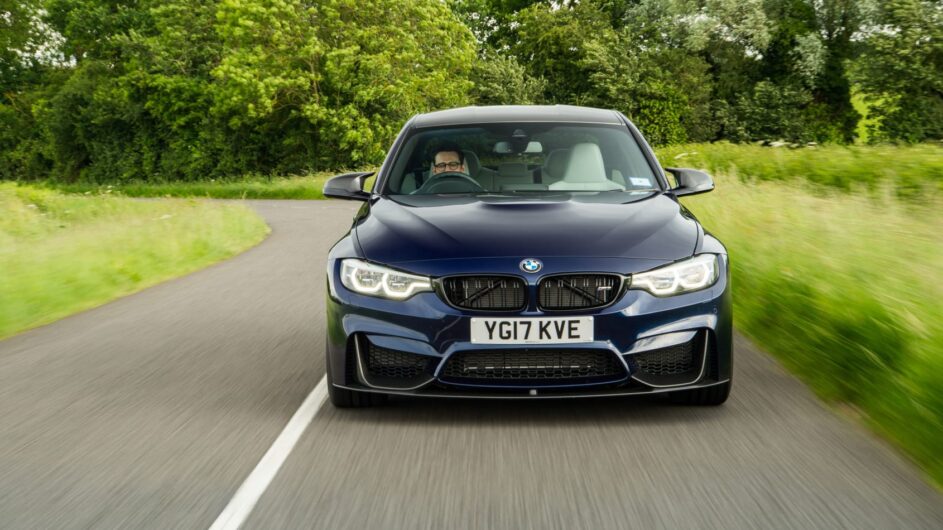
Acceleration times only tell half the story though, and the M3 is an astonishingly fast car with such huge reserves of torque that its performance is always available and only a twitch of your right foot away.
The M3’s stripped-out CS counterpart has even more power (454bhp), a quicker 0-100kph time (3.9sec) and a faster top speed (280kph). It’s a marked improvement over a standard M3, but also costs a hefty $101,000.
Engine and gearbox
One consolation for the loss of the E92 M3’s screaming naturally aspirated V8 engine was the sheer performance of its forced induction replacement. The F80’s 3-litre twin-turbocharged straight-six revs to a relatively high (for a modern turbo engine) 7300rpm, but rather than just being able to reach those elevated RPM figures, the engine gets more and more intense as the revs pile on. It makes for a great engine to wring out, with every additional RPM making the engine ever more exciting rather than losing momentum at the top of the rpm range.
One element that isn’t quite as blissful is the way it sounds. It may be an M Division straight-six, but you’d never really guess it, instead there’s an industrial rumble from the exhaust with an extra burp at the gear change, the sort that’s now seemingly obligatory on turbocharged performance cars. The engine note is also supplemented by a synthetic growl that emanates from the speakers, and although it’s not unpleasant, it lacks authenticity.
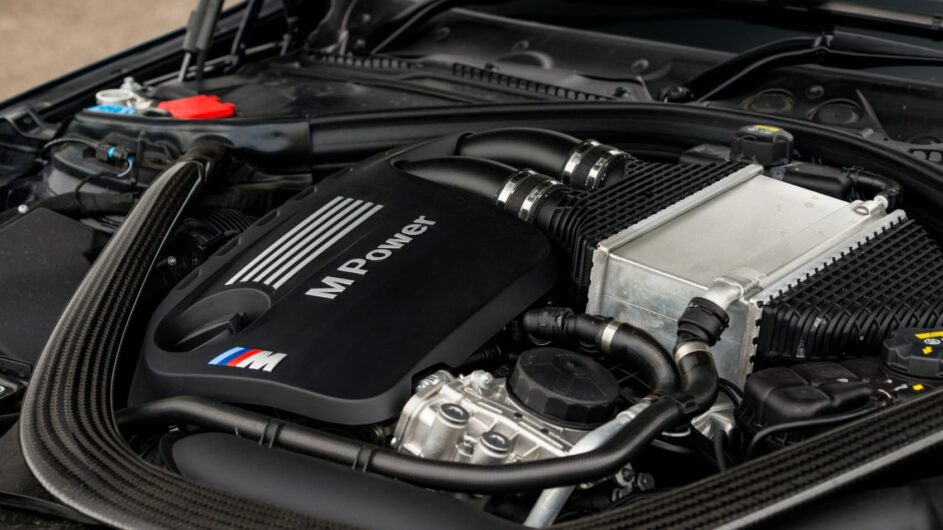
Cars with the Competition Package may have more power, but the engine behaves in much the same way as the standard M3’s, with great throttle response and a punchy top end. The M3 comes with the option of two transmissions, a six-speed manual or BMW’s DCT, a seven-speed twin-clutch automated manual. The speed of the gear changes from the dual-clutch transmission is practically faultless, and you can leave your up-changes right to the red line without the worry of stumbling into the limiter. But although the shifts are fast, each up-shift is accompanied by a sudden jolt of torque. So, rather than a smooth seamless swapping of cogs, a pull of the right hand paddle can result in an extra thump in your back and the rear wheels losing traction. It means you have to be very careful when you choose to change gear; for example, it would be unwise to go for a higher gear mid-corner with the traction control off, even if the road was perfectly dry and warm.
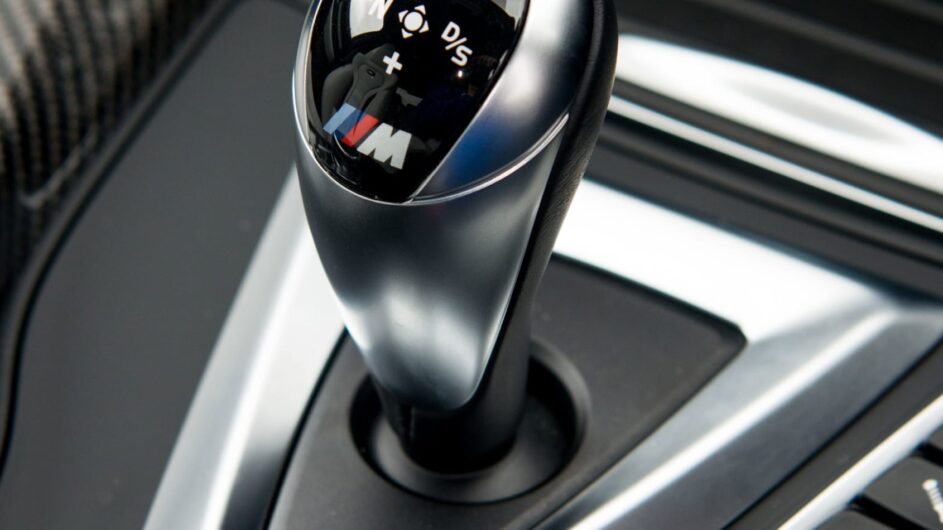
The DCT gearbox is a $2915 option while the six-speed manual comes as standard. Unfortunately the latter is not a very popular choice, despite its more authentic driving experience. As such, the only time we’ve had opportunity to try the M3’s engine with the manual was in AC Schnitzer’s ACL2. The 2-series based car used the more traditional transmission because it’s 25kg lighter than the DCT, but the greater benefit comes from the extra control it grants the driver. Feeding in the clutch at the rate that you consider acceptable, rather than abrupt nature of the DCT ‘box, means you can enjoy the drivetrain significantly more. And, even though the ACL2 has 137bhp more power than the M3, the manual gearbox actually makes it a more approachable car to drive.
Ride and handling
It’s no secret that there were elements about the way early F80 M3s drove that have left us less than impressed. Our issue mostly stemmed from the body control at the rear axle; bumps and crests created a disproportionate amount of movement that took time, and a smooth road, to settle. The unruly rear axle combined with the M3’s vast torque and its snappy DCT gear changes meant that the F80 was tricky car to stay on top of on a demanding road.
However, facelifted 2018 model-year cars are vastly improved. Even at low speeds the M3 feels more settled than its immediate predecessors, and it remains calm and poised as the speed builds.
One aspect of the M3 that has never been in doubt is just how impressive the front axle is. There is truly fantastic grip on turn in, meaning you can carry huge speed into a corner without any understeer. The steering doesn’t transmit much usable information about what’s happening between the tyres and the road but, with such a dependable nose, you can be incredibly accurate when placing the car. What’s more, this generation of M3 now has a set of brakes up to the task of stopping a powerful saloon car so, whether they’re the standard steel brakes or optional carbon ceramics, you can really lean on them.
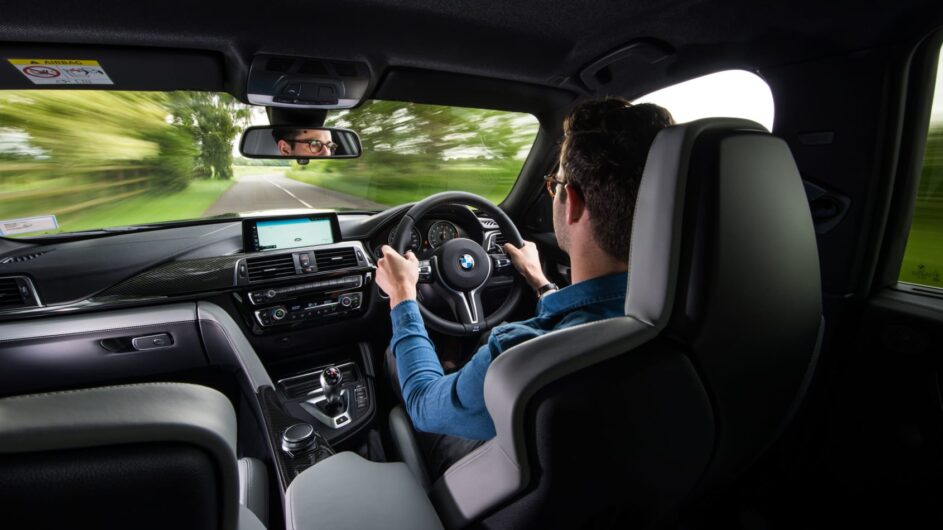
To no one’s surprise, the M3’s huge power and torque mean that rear traction can often be limited, especially in the wet. But, although you can’t always use full throttle on the exit of every corner, the massive performance allows you an extra way to control and manipulate the M3 in a corner: via the throttle. An extra squeeze of the accelerator immediately makes the car rotate, and with a touch of corrective lock the front end keeps you pointing in the right direction.
Even once rear traction has been lost, and the wheels have started to spin, the M3 builds speed in a remarkable way. Even when you expect forward progress to be wasted in a cloud of tyre smoke a squeals, the M3 continues to thrust forward.
The M3 isn’t playful enough with the traction control fully on to allow such behaviour. Switch it to its semi-off state, MDM, and you are able to get a taste of this extra adjustability. Although this safety net does stop things getting out of hand – incredibly useful when the roads are wet and cold – it’s still very restricting.
M3s fitted with the Competition Package are not only more powerful, but chassis changes improve the body control at the rear even further to suit the extra grunt.
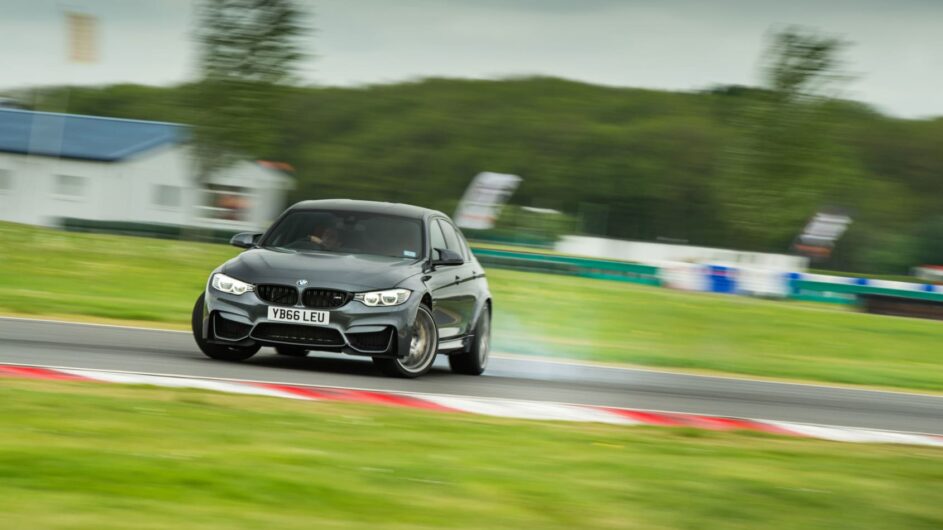
On track the M3’s mighty front end and masses of torque mean that it’s all about managing oversteer. Every prod of the throttle, even through some of the faster corners has the rear tyres spinning. But, thanks to a very transparent limited slip differential, that locks early and remains consistent throughout a corner, it feels very natural to drive at the limit. The engine’s response means that once you’re accustomed to the M3’s balance, you can restrict the slides to small angles and refrain from losing too much speed to wheelspin.
Of course, such attributes make the M3 the consummate hooligan on track, too. The motor’s spiky turbocharged torque delivery means that you can very easily apply too much throttle to initiate a slide, then you have to be very quick with the steering to catch it. But, set to its firmest mode, the chassis keeps the body controlled and drifts are just as easy to gather up as they are to start.
L/100km and running costs
The M3 has never been a cheap car to run, and the new one is no different. BMW claims the M3 can achieve 8.3L/100km, but in reality that will plummet to mid- to low-20s if you tap into the car’s true performance.
With such significant power and torque, the M3 is going to go through rear tyres relatively quickly. The 275/35 19 Michelin Pilot Super Sport tyres, that are standard fitment for the M3, cost around $260 each. The Competition Pack comes on bigger 20-inch wheels with larger versions of the same tyre; it runs 285/30 20 rear tyres. Thankfully the bigger, wider tyres aren’t much more expensive at $270 each.
Front tyres for the M3 are cheaper, at about $207 for the regular car and $260 for the Competition pack, but won’t have to endure quite as much pain and probably won’t need changing as frequently as the rears.
As with many high performance cars the M3 has a running-in period of 1900 kilometres, at which point it needs to be serviced. This is also when the car’s launch control is activated.
Interior and tech
Inside, the M3 doesn’t have the pizzazz and glamour of most rivals; there isn’t the flamboyant luxury of the C63, nor is there the same tech-fest that you’ll find in modern Audis, but it’s extremely well built and when specified cleverly, can still feel special. That’s not to say the F80’s interior isn’t pleasant, it is, it’s just not remarkable. The materials and plastics are of a good quality, the dials are clear and fuss free, it’s logically laid out while some carbonfibre panels help it look relatively sporty.
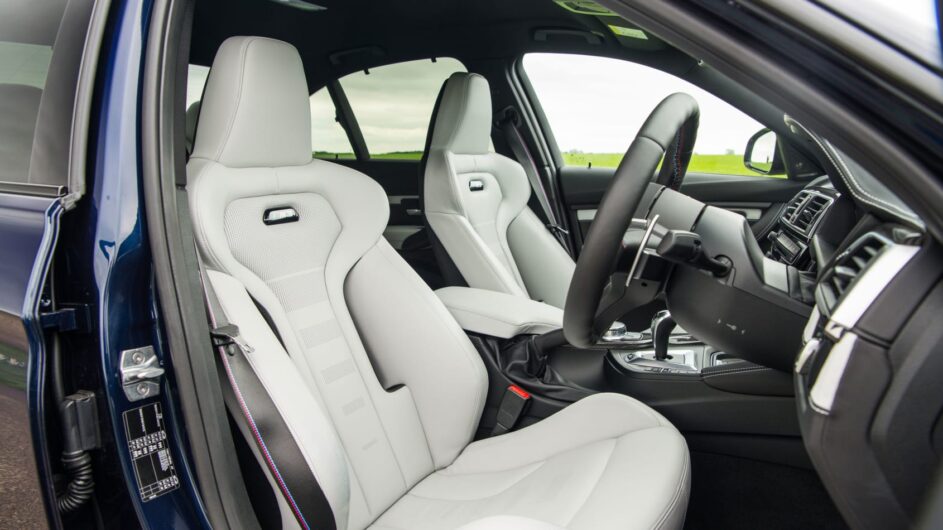
The M3 is very easy to get comfortable in; there’s a good range of movement from the steering column as well as the seat and you can sit low with the wheel close to your chest, so even though this M3 doesn’t have any direct racing pedigree you do feel a bit like a touring car driver. The Competition Package brings with it new seats, which feel almost identical to the standard ones – there’s the same range of movement and no more support – but they do have flying side bolsters and look fantastic.
The M3’s infotainment is dealt with by BMW’s much copied iDrive system. It’s perhaps not as logical as a touchscreen set-up – you can’t simply prod what you want on screen – but it’s still very easy to use while the dial and buttons are less frustrating than a slow, inert interactive screen.
Design
The M3’s bumpers are almost as complicated looking as an F1 car’s wing, with multiple intersecting parts, vents and scoops. It means the F80 isn’t as clean or as elegant as previous versions of the M3, but it certainly looks mean and purposeful.
A lot of that aggression comes from the M3’s flared arches, which are more significant than those of its coupe alternative, the M4. Both the M3 and M4 share the same suspension and track width, however the standard 3-series is narrower than the basic 4-series and so the saloon’s arches have been stretched even further to cover the wider M-car track.
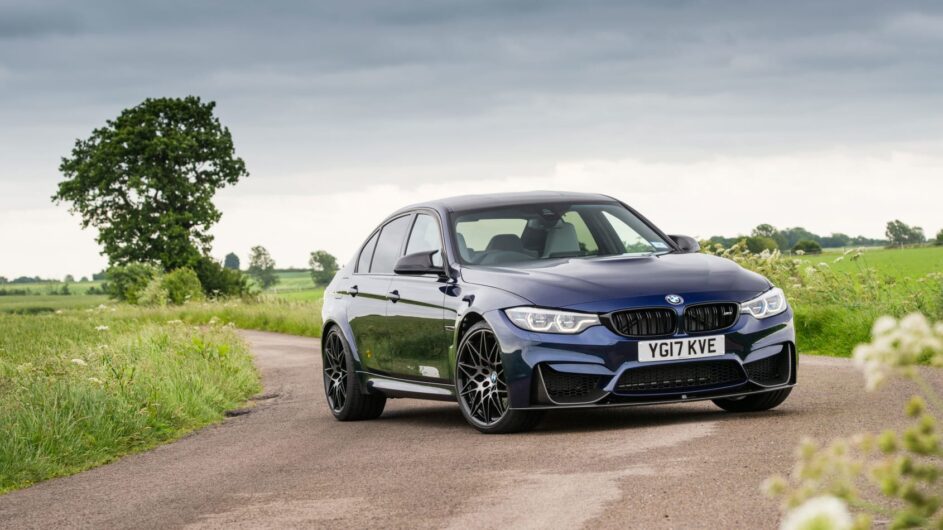
Coupled with a low, nose down stance and a set of aerodynamically shaped mirrors the F80 looks appropriately tough and sporty, just like an M-car should.
Differentiating the facelifted, 2018 model-year car from earlier versions of the F80 M3 is a task for dedicated BMW fans. The most obvious changes are limited to the front light clusters that includes LED headlights and light bars for the daytime running lights.
This article originally appeared at evo.co.uk
Copyright © evo UK, Dennis Publishing

